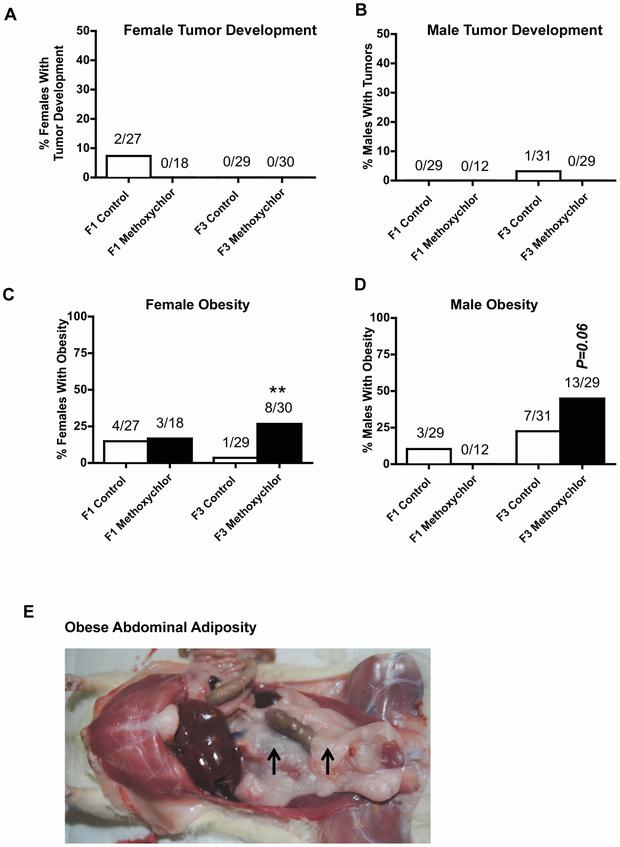The pesticide methoxychlor has been linked to adult onset kidney disease, ovarian disease and obesity - generations after rats were exposed.
Methoxychlor, also known as Chemform, Methoxo, Metox or Moxie, was invented in 1948 and became popular in the 1970s after DDT was banned. It was used on crops, ornamental plants, livestock and pets. It is still used in many countries around the world it was banned in the U.S. in 2003 due to concerns about toxicity and disruption of endocrine systems. Methoxychlor was found to behave like the hormone estrogen and affect the reproductive system.
When researchers exposed gestating rats to high doses of methoxychlor, they saw increases in the incidence of kidney disease, ovary disease and obesity in offspring spanning three generations. The incidence of multiple diseases increased in the third generation or "great-grandchildren." The researchers say the pesticide may be affecting how genes are turned on and off in the progeny of an exposed animal, even though its DNA and gene sequences remain unchanged.

Ancestral exposure to methoxychlor and transgenerational tumor development and transgenerational obesity. Percentages of F1 and F3 generation females (panel A) or males (panel B) with tumor development and percentages of females (panel C) or males (panel D) with obesity. Representative abdominal adiposity for obese (panel E) animals is presented with arrows indicating the excessive dorsal abdominal and retro-peritoneal adiposity distribution. The number of diseased rats / total number of rats is shown above the respective bar graphs (P<0.01).Credit: doi:10.1371/journal.pone.0102091.
"What your great-grandmother was exposed to during pregnancy, like the pesticide methoxychlor, may promote a dramatic increase in your susceptibility to develop disease, and you will pass this on to your grandchildren in the absence of any continued exposures," says Michael Skinner, Washington State University professor and founder of its Center for Reproductive Biology.
This is called transgenerational epigenetic inheritance. The Skinner lab has specialized in finding epigenetic effects to implicate a host of environmental toxicants, including DDT, plastics, pesticides, fungicides, dioxins, hydrocarbons and the plasticizer bisphenol-A or BPA.
Implications for obesity, fertility, disease
The authors declare that a majority of transgenerational disease traits can be transmitted primarily through the female line. They also identified mutations in the sperm epigenome of great-grandchild male rats. The epigenome functions like a set of switches for regulating gene expression and can be altered by environmental conditions.
The epigenetic changes observed were specific to methoxychlor exposure and may prove to be valuable biomarkers for future research on transgenerational disease.
For people exposed to the pesticide, Skinner says his findings have implications such as reduced fertility, increased adult onset disease and the potential to pass on those conditions to subsequent generations.
He suggests that ancestral exposures to methoxychlor over the past 50 years in North America may play a part in today's increasing rates of obesity and disease.





Comments